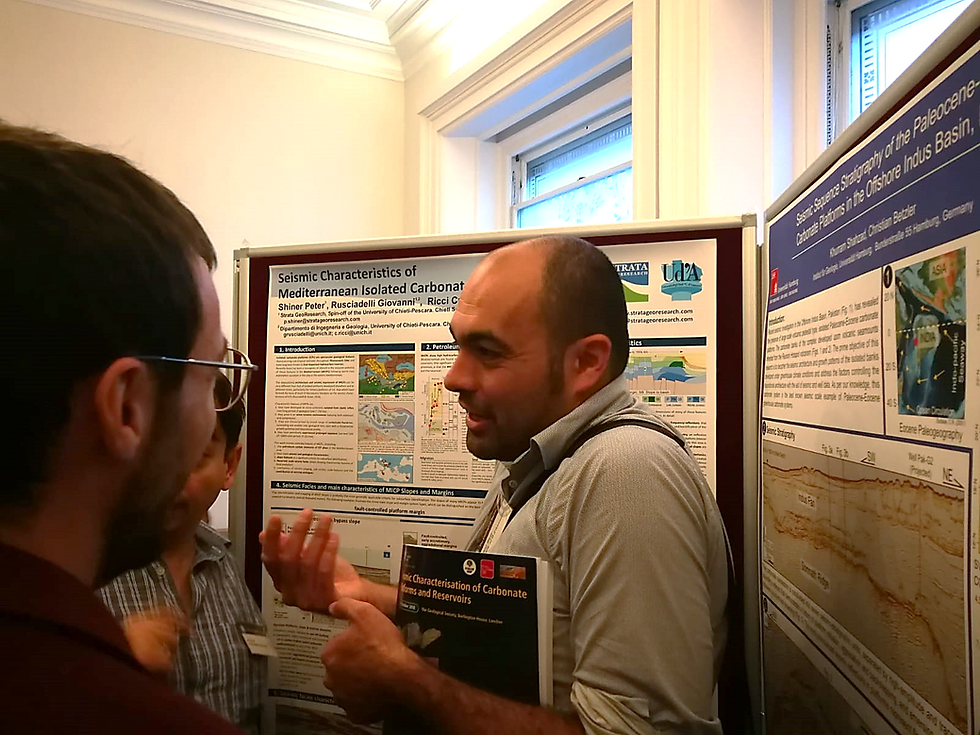Field Seminar on Seismic and Sequence Stratigraphy of Carbonate Systems: the 3 step procedure
- vecchiap
- Mar 26, 2018
- 1 min read
Step 2: Reconstruct the internal architecture of a megasequence through the interpretation of geometry and the identification of facies and lithology attributes

This step of the field seminar at the Mt. Parnassus (Greece) is finalized to the establishment of the geometry and distribution of GDE (gross depositional environments) – inner platform, platform margin, slope and basin - within each megasequence. This allows a basin-scale overview of the distribution of the petroleum system elements in relation to the transgressive and regressive phases, and provides a rationale to follow resource potential in the megasequence.
The objective is achieved by interpreting the shape of the megasequence and working with point data. The geometry of the megasequence helps in the identification of the shelf edge, of the slope to basin transition, or of the carbonate build-ups; this is the key to rapidly mapping a basin wide understanding of the facies distribution within the megasequence. Point data, such as lithofacies and biofacies provide details on the depositional environments.
Visit us at www.stratageoresearch.com and contact us at info@stratageoresearch.com.




Comments